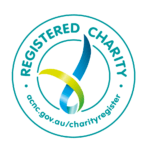Media Release
22 April 2022
Political Parties Warned on Major Hit On Health Budgets
If enabled, player.vimeo.com may collect information about your activity.
Manage preferences to always allow this content.
Read the report: State of the Nation: Because people with ME/CFS matter
Emerge Australia, the national patient organisation providing services and evidence-based education about myalgic encephalomyelitis/chronic fatigue syndrome (ME/CFS) today issued an alert on a potential major hit to the Federal Budget and health services facing both major parties.
Anne Wilson, CEO of Emerge Australia, said it is estimated that 250,000 Australians live with ME/CFS.
Approximately 25 per cent of whom, (60,000+ people), have symptoms so severe they are housebound or bedbound and dependent on carers.
Ms Wilson said, recently a Deakin University Research Report suggested up to 325,000 more Australians may develop Long COVID in the coming months,1 with associated health and economic costs potentially having a disastrous impact.
“The human cost of post-viral diseases is obviously paramount, but the economic cost could also be devastating. We believe it is VITAL that Federal and State Governments take this into account in planning their health budgets,” Ms Wilson said.
Dr Richard Schloeffel OAM, the Medical Director of Emerge Australia, who for 24 years has focused his practice and research on the understanding and management of Complex and Chronic Disorders, said funding for research into ME/CFS is urgently needed to develop an effective treatment and care for an increasing number of Australians suffering the debilitating disease.
“Australia has dropped the ball on myalgic encephalomyelitis/chronic fatigue syndrome research and funding which dramatically impacts 250,000 patients across the country. and will blow out the health budget costs if there is no concerted action to fund research.
According to a 2020 estimate, the cost of ME/CFS to the Australian economy is $14.5 billion2. 70% due to loss of income, 24% to direct personal out-of-pocket costs and 6% as a cost to government and the health care system3.
“If Long COVID more than doubles the number of patients with post-viral diseases, it will significantly impact the budgets of Governments, patients and their families,” Dr Schloeffel said.
He said, for people with ME/CFS, capacity to work is typically severely compromised, leading to very high unemployment rates.
Emerge Australia’s 2019 health and wellbeing survey revealed 89% of respondents ceased or significantly reduced paid work after their illness onset4. In another study, a literature review of studies published between 1966 and 2004, found unemployment rates ranged from 35% to 69%5.
ME/CFS patients spend considerably more on health care than the general population and visit healthcare providers more often6,7. This is despite most experiencing major difficulties accessing healthcare due to their illness, systemic barriers, and financial considerations8,9,10.
“More than two-thirds of ME/CFS patients are living below the poverty line11. ME/CFS also has a profound impact on carers, particularly those who support the 25% of patients who are house or bedbound.”
Emerge Australia’s 2019 health and wellbeing survey reported 90% of carers were financially unsupported in their role, which causes inter-generational financial burdens in the case of parents, and compounds financial stress for domestic partners12.
“For someone with ME/CFS, every aspect of their life is impacted by their symptoms. Those even moderately unwell are often socially isolated, unable to work and require assistance with daily living.”
They have worse employment, mental, social, and physical health outcomes than diseases such as multiple sclerosis, HIV/AIDS, cancer, and depression13,14,15.
Dr Richard Schloeffel said While research is yet to uncover the cause of ME/CFS, a majority of people with ME/CFS can attribute onset of symptoms after viral infection16. such as coronaviruses, Epstein-Barr virus, and Ross River virus.”
Lack of Research on (ME/CFS) – read more.
“There is an urgent need to fund more research and awareness to prevent the spread of Myalgic encephalomyelitis/chronic fatigue syndrome.”
Media Enquiries:
Ron Smith OAM, Media Communications, Emerge Australia – Mobile: 0417 329 201 to arrange an interview with Anne Wilson or Dr Richard Schloeffel OAM.
Patient Stories
Hear from real people living with the impacts of life with ME/CFS
Jennifer shares the impact of ME/CFS on her life and family.
Jop shares his story of life with ME/CFS.
References
- M. Henscher and MR Angeles (2021) ‘Potential scale of Long COVID cases from the Omicron wave in Australia: Summer 2021-2022’ Institute for Health Transformation, Deakin University, Melbourne, (2021). Available at: http://iht.deakin.edu.au/wp-content/uploads/sites/153/2022/02/Long-COVID-Omicron-briefing-paper-IHT-02-2022.pdf.
- S. Close, S. Marshall-Gradisnik, J. Byrnes, et al. (2020). ‘The Economic Impacts of Myalgic Encephalomyelitis/Chronic Fatigue Syndrome in an Australian Cohort’ Front Public Health 8:420.
- Close, et al. ‘The economic Impacts of Myalgic Encephalomyelitis’.
- Emerge Australia (2019). ‘Health and Wellbeing Survey 2019’, available at http://emerge.org.au/health-and-wellbeing-survey-2019.
- R. Taylor and G. Kielhofner (2005). ‘Work-related impairment and employment-focused rehabilitation options for individuals with chronic fatigue syndrome: A review’ Journal of Mental Health, 14:3.
- S. Twemlow, et al. (1997) ‘Patterns of utilization of medical care and perceptions of the relationship between doctor and patient with chronic illness including chronic fatigue syndrome’ Psychological Reports, 80:2.
- S. Thanawala and R. Taylor. (2007) ‘Service utilization, barriers to service access, and coping in adults with chronic fatigue syndrome’ Journal of Chronic Fatigue Syndrome, 14:1.
- J. Lin, et al. (2011) ‘The economic impact of chronic fatigue syndrome in Georgia: Direct and indirect costs’ Cost Effectiveness and Resource Allocation, 9:1.
- Committee on the Diagnostic Criteria for ME/CFS. ‘Beyond Myalgic Encephalomyelitis’, pp. 31-33.
- Thanawala and Taylor. ‘Service utilization’.
- Emerge Australia. ‘Health and Wellbeing Survey 2019’.
- Emerge Australia. ‘Health and Wellbeing Survey 2019’.
- C. Kingdon, E. Bowman, H. Curran, H, et al. (2018) ‘Functional Status and Well-Being in People with Myalgic Encephalomyelitis/Chronic Fatigue Syndrome Compared with People with Multiple Sclerosis and Healthy Controls’ PharmacoEconomics – Open 2:4.
- L. Nacul, et al (2011). ‘The functional status and well being of people with myalgic encephalomyelitis/chronic fatigue syndrome and their carers’ BMC Public Health, 11.
- M. Núñez, et al (2008). ‘Health-related quality of life in chronic fatigue syndrome versus rheumatoid arthritis as control group’ Journal of Chronic Fatigue Syndrome, 14.
- H. Naess, et al. ‘Postinfectious and chronic fatigue syndromes: clinical experience from a tertiary-referral centre in Norway’ Vivo, 24:2 (2010).




